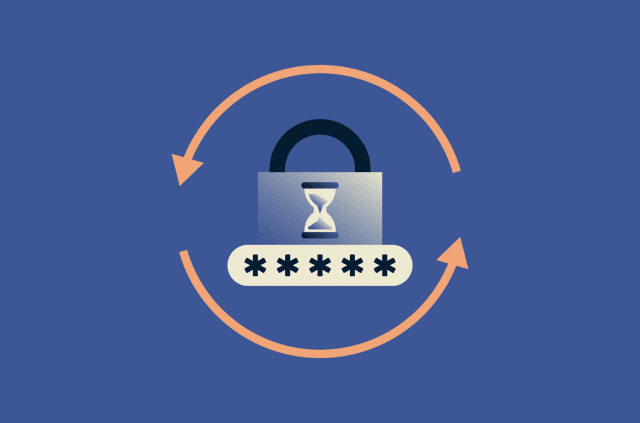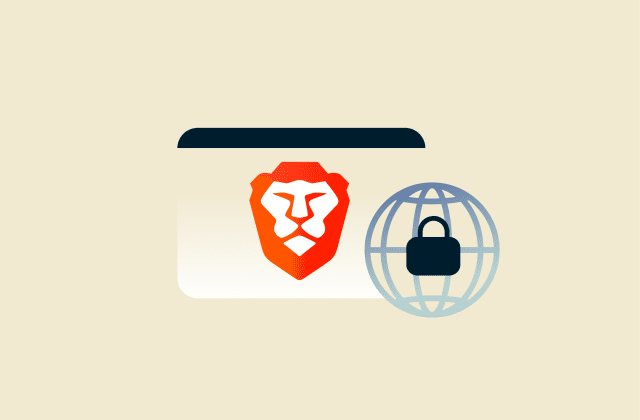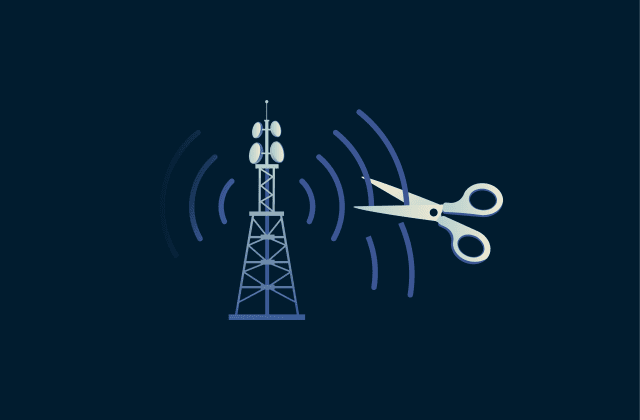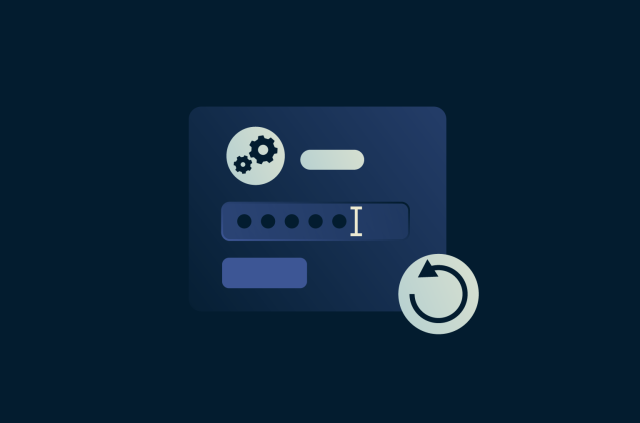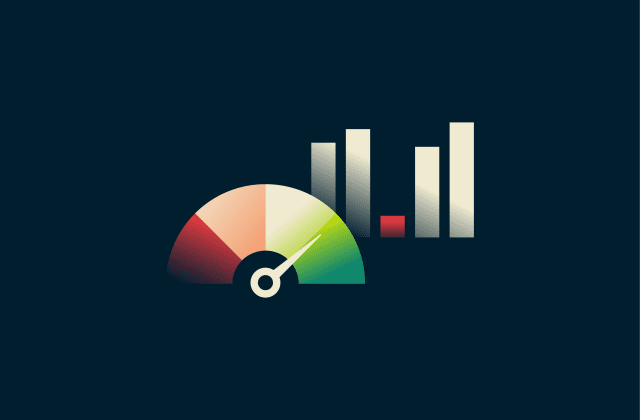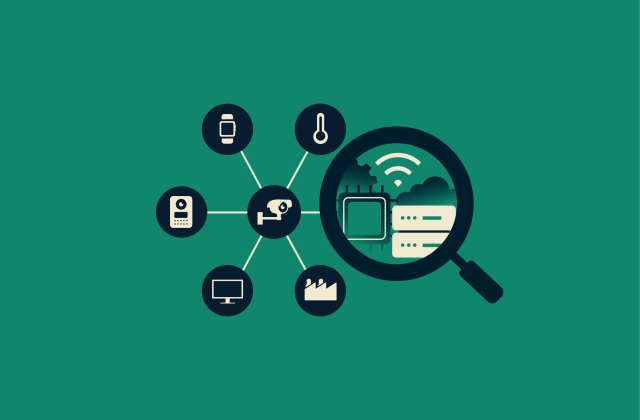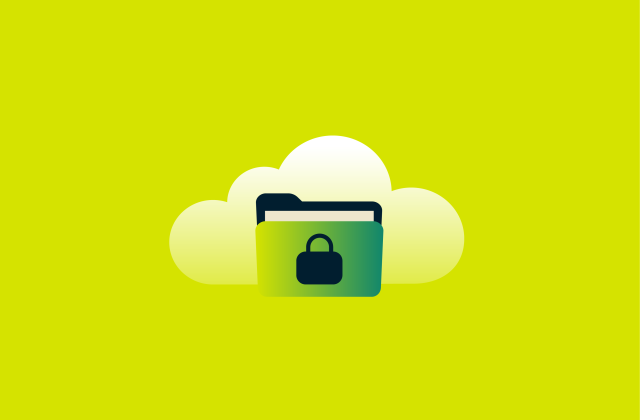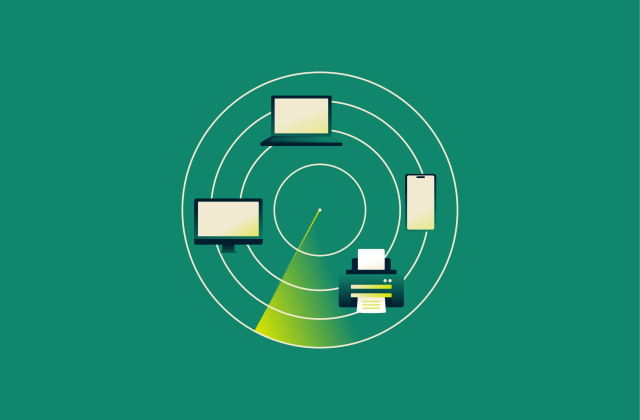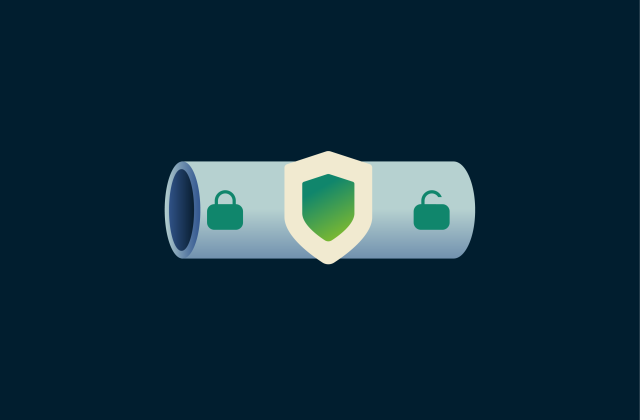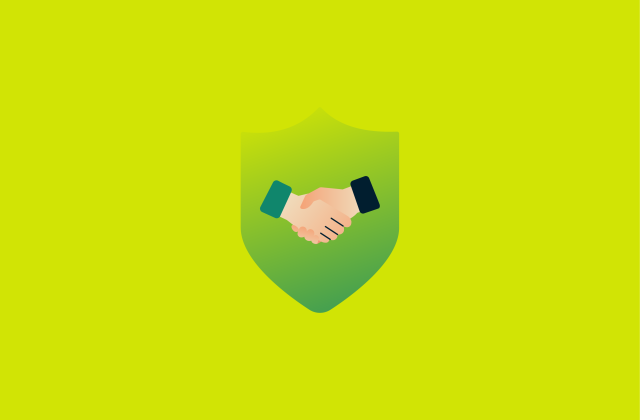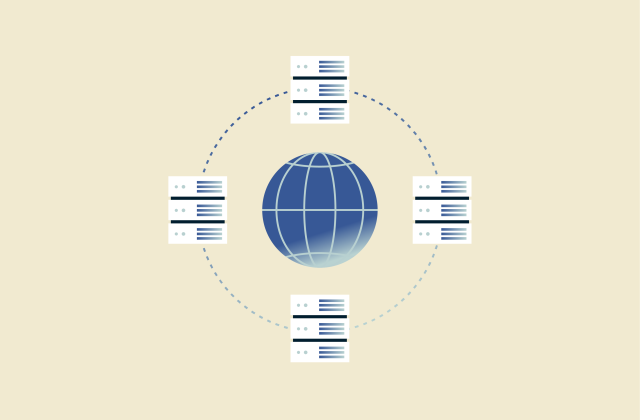What is a web proxy, and how does it work?

Think you're browsing privately? Think again. Most websites can see your real IP address, track you with cookies, and log your activity, unless you take extra steps like using a proxy or VPN.
Web proxies can help you conceal your IP address and add a layer of privacy to your online activity. But not all proxies are created equal.
In this guide, you’ll learn exactly how web proxies work, how they differ from VPNs, and which types offer the best privacy. You’ll also learn when to use one, what to avoid, and how to pick the right kind of proxy based on your needs.
Quick tip for extra security
Most web-based proxies encrypt your traffic only between your browser and the proxy server. After that, the proxy decrypts your traffic before sending it to the target website, meaning the proxy owner can see what you’re doing, even if the final site uses HTTPS. In contrast, a VPN creates a fully encrypted tunnel between your device and the VPN server, preventing anyone, including the VPN itself, from inspecting your traffic. ExpressVPN offers easy-to-use apps for every major device and a wide range of global server locations, helping you stay protected with minimal hassle.
Web proxy explained
 Web proxies act as a middleman between your device and the internet. Instead of connecting directly to a website, your request is routed through a separate server first. In other words, the proxy server (or internet proxy) sends requests to the internet on your behalf, can rewrite parts of the data you send, and then returns the page you expect in your browser. That way, the website you’re visiting doesn’t see your real IP address or location; they see that of the proxy server.
Web proxies act as a middleman between your device and the internet. Instead of connecting directly to a website, your request is routed through a separate server first. In other words, the proxy server (or internet proxy) sends requests to the internet on your behalf, can rewrite parts of the data you send, and then returns the page you expect in your browser. That way, the website you’re visiting doesn’t see your real IP address or location; they see that of the proxy server.
However, even with a proxy hiding your IP address and location, if your device still uses your default Domain Name System (DNS) server, which is provided by your internet service provider (ISP), those requests can reveal the websites you’re trying to access. To keep DNS requests private, you’ll also need encrypted DNS.
Read more: If you’re looking to change your virtual location, web proxies are not the only option. Here’s how proxies, VPNs, and Tor stack up.
What is the purpose of a web proxy?
- IP masking and encryption: A proxy can assign a different IP address to your connection, so websites see the proxy’s location instead of yours. Some proxies also encrypt the link between your device and the proxy, keeping your data unreadable in transit.
- Protecting privacy: By standing between you and the sites you visit, a web proxy can reduce direct exposure of your IP address.
- Monitoring and control: In certain organizations, web proxy servers are set up to supervise activity or block access to certain categories of sites based on IP address.
- Caching and speed improvements: Some proxy servers store copies of popular sites, which may speed up repeat visits. This is useful in large organizations with many people visiting the same pages.
A proxy server can also act as a firewall and filter. You, or a network administrator, can choose one that inspects traffic, applies rules, and keeps your personal IP address out of sight. Hackers and other bad actors only see the proxy’s address, not yours. If the proxy supports encryption, passwords and other sensitive data gain an extra layer of protection as your requests pass through it.
Remember: A web proxy doesn’t prevent tracking by cookies, browser fingerprinting, or local storage. For instance, if you type your name into a form, the site may save it in local storage so it recognizes you on your next visit. So it’s not a complete privacy solution on its own.
Web proxy vs. proxy server: Is there a difference?
People often use these terms interchangeably, but there are differences. A web proxy is a simpler, browser-based service, while a proxy server describes a broader concept with more advanced routing or security features.
In essence:
- A web proxy is a specific type of proxy server and is typically used through a website or browser setting. It masks your IP, but it can’t maintain a secure channel between you and the website you’re visiting.
- A proxy server can be a piece of software or hardware that processes traffic for multiple networked devices. As well as hiding your IP, it can maintain a secure channel between you and the site you’re visiting.
Note that system-level proxies or SOCKS proxies are different. They operate at a lower level and support more than just web traffic. Depending on the app, they can also handle email and file transfers.
How does a web proxy work?
A web proxy sits between your device and the websites you access. Your browser requests a particular webpage, and that request is diverted to the proxy. The proxy collects the information from the target site and forwards it back to you. This middle step hides your IP address from the final destination because the site only sees the proxy’s address.
Web proxies are often hosted in data centers or provided by a third party. Many of these proxies can be used by simply opening a specific web interface.
Step-by-step overview
- Browser request: You open your browser and enter the address of the specific website you want to visit.
- Proxy interception: Your request is sent to the web proxy instead of going directly to the website.
- Address modification (if any): The proxy can modify details about your IP address, the request headers, or other identifying data. For example, some proxies alter request headers like the User-Agent or X-Forwarded-For to mask or modify the source of traffic. Others may pass them through unchanged.
- Fetch content: The proxy connects to the website, retrieves the content, and receives the response.
- Caching: Some web proxies also cache frequently accessed content. If the requested website or resource is already in the proxy's cache, it can serve the cached version to you, speeding up the process and reducing the load on the actual website.
- Response forwarding: The content is relayed back to you, typically with the appearance of coming from the proxy’s IP address.
Real-life use cases for a web proxy
Web proxies do more than hide an IP address. Companies, schools, and home users lean on them for day-to-day tasks that keep networks running smoothly and information flowing. Here are some of the most common examples:
- Manage internet use at work or home: Route all traffic through a proxy to block time-wasting or unsafe sites and keep a log of browsing activity.
- Filter content in schools and libraries: Block students from opening gaming or social media pages during class while still allowing access to learning sites.
- Speed up repeat visits: In a busy office, a caching proxy can store copies of popular pages and serve them locally, reducing load times for everyone.
- Hide your IP for research purposes: Journalists, marketers, and price comparison tools often use proxies to look at sites without revealing their real location or triggering rate limits.
- SEO monitoring: Marketing teams run searches from many IP addresses to view unbiased search engine results in different regions. The data shows keyword performance and competitor positioning, helping refine an SEO strategy.
Note: Since most proxies don’t encrypt your traffic, anyone on the same network, like a hacker or rogue hotspot, could intercept your data. If you’re handling anything sensitive, a VPN like ExpressVPN is a better option, as it encrypts your connection end-to-end.
Types of web proxies
Web proxies often get classified in more than one way. To simplify, we’ll look at four broad categories:
Each category has subtypes that are suited for specific tasks. Selecting the right one depends on your need for speed, security, and access.
1. Based on function
Forward proxy
A forward proxy is the standard type many people think of when they hear “proxy.” It serves as the gateway between your internal network (or individual device) and external sites. Individuals, organizations, or entire networks can also use a forward proxy to filter traffic, apply content restrictions, and centralize outbound requests.
Key points:
- Stands between internal clients and outside resources.
- Commonly used for controlling outbound traffic or caching data to save bandwidth.
- Used to enforce access control, blocking certain sites or allowing usage only during set hours.
- Can hide internal addresses from the public internet.
Reverse proxy
A reverse proxy does the opposite of a forward proxy. It sits in front of a web server (or multiple servers), handling incoming requests from external clients. It’s a popular solution for large sites and can help with load balancing, Transport Layer Security (TLS) termination (so you manage HTTPS in one place), caching, and shielding a server’s real identity. Reverse proxies are also used to mitigate distributed denial-of-service (DDoS) attacks, helping improve performance and security for backend servers.
Key points:
- Receives requests from external traffic, then forwards them to the actual server.
- Helps distribute incoming requests to multiple back-end servers.
- Handles Secure Sockets Layer (SSL) / TLS termination, so the backend can run plain HTTP while clients connect over HTTPS.
- Shields the real server location, adding an extra security layer and mitigating DDoS attacks.
2. Based on anonymity
Transparent proxy
This type of proxy doesn’t hide that it’s a proxy, and it doesn’t hide your IP address. Organizations often use it to filter content or enforce internet use policies. The user often does not realize a proxy is in use because it requires no input from the user’s device. An organization can employ a transparent proxy for caching and filtering traffic without actively informing users.
Key points:
- Announces its presence to websites.
- Doesn’t hide your IP address.
- Often deployed by organizations to monitor usage or filter content.
Anonymous proxy
An anonymous proxy declares itself as a proxy but doesn’t show your IP address to the site. This is used to limit direct exposure of user data, potentially cutting back on targeted advertising or location-based blocks.
Key points:
- Identifies as a proxy but hides your IP address.
- Offers moderate privacy, though some sites may still detect the use of a proxy and block it.
- Protects against basic IP-based tracking.
High anonymity (Elite) proxy
A high anonymity proxy (sometimes called an elite proxy) conceals the fact you’re using a proxy at all. It repeatedly changes its IP address, leaving the destination site with minimal clues about your original location or that a proxy is involved.
Key points:
- Doesn’t reveal your IP address or that it is a proxy.
- Rotates IP addresses frequently.
- Commonly used when maximum privacy is the goal.
Distorting proxy
A distorting proxy declares that it’s a proxy but presents a bogus IP address to the site. This gives the appearance that you’re browsing from a different place or that the request is coming from an entirely different user.
Key points:
- Identifies as a proxy but uses a false IP address.
- Lets you appear to come from a specific location.
- May be blocked by some sites that detect inconsistencies.
3. Based on protocol
HTTP proxy
An HTTP proxy handles only plain-text HTTP traffic. It listens on port 80, the default doorway for ordinary, unencrypted sites that start with http://, and ignores other ports such as 443, which HTTPS uses. Because it can’t process TLS handshakes, most HTTPS pages either fail to load or must be tunneled through the proxy using the CONNECT method, which effectively turns the proxy into an HTTPS proxy. Everything you send through a pure HTTP proxy is readable by the proxy owner and anyone who intercepts the link.
Key points:
- Supports traffic on standard port 80.
- Processes unencrypted web traffic.
- Suitable for basic web filtering, but less secure since it doesn’t encrypt data by default.
HTTPS proxy
An HTTPS proxy is built to handle encrypted web traffic. In its default “pass-through” mode, it simply relays the TLS handshake on port 443, so the encryption stays intact from your browser to the target site. The proxy can see only the destination’s IP address and the domain name, not the page contents.
If the proxy is configured for SSL/TLS interception (often called “break-and-inspect”), it steps in as a man-in-the-middle. The proxy presents its own certificate to your device and completes the TLS handshake, decrypting the data. It applies security scans, content filters, or data loss prevention checks. Then, it re-encrypts the traffic with the site’s real certificate and forwards it to the server.
This method can let a company scan for malware or block restricted pages, but it also means the proxy operator can read everything inside the session. Devices behind the proxy must trust a custom root certificate; without that trust, browsers will warn of an invalid certificate.
Key points:
- Routes encrypted web traffic on port 443.
- Can offer better privacy than HTTP-only proxies.
- May involve certificate-based interception for deeper inspection.
SOCKS proxy
A SOCKS proxy works one layer below HTTP/HTTPS proxies, so it can forward nearly any kind of traffic, from web pages to email. SOCKS5, the latest version, adds support for User Datagram Protocol (UDP) traffic and offers stronger authentication options.
UDP support matters for apps that need low-latency, one-way bursts of data; think live gaming, voice chat, or video calling, where a full Transmission Control Protocol (TCP) handshake would slow things down. SOCKS5 also offers authentication features like username-and-password login to guard the proxy against unauthorized access.
Key points:
- Works with many protocols, not only HTTP or HTTPS.
- Commonly used for a variety of apps, such as Voice over Internet Protocol (VoIP) calls.
- Can be slower if it’s overburdened or poorly configured.
4. Based on hosting and access
Data center proxy
This type uses IP addresses from large data centers, not from household internet connections. Speeds are high and prices are low, but many websites recognize these ranges as non-residential and may block or throttle the connection.
Key points:
- Hosted in cloud or data center environments.
- Not tied to a specific ISP.
- Can be cheaper and fast, but it’s more likely to be blocked.
- Good for automation tasks where occasional blocks are acceptable, like testing or bulk downloads.
Residential proxy
A residential proxy assigns an IP address from a real home ISP, so every request looks like it comes from a normal household connection. That’s why they’re popular for web scraping or ad verification tools: filters that would block data center IP ranges are much less likely to reject traffic that appears to be from everyday residential users.
Key points:
- IPs belong to real households.
- Less prone to site bans, as traffic seems genuine.
- Can be more expensive.
Mobile proxy
A mobile proxy uses IP addresses linked to mobile data networks. Traffic is routed through mobile carrier towers, making it appear as if you’re connecting from a smartphone or tablet. Some websites see this traffic differently, which can be useful for testing mobile ads or bypassing blocks that target traditional broadband connections.
Key points:
- IP addresses from mobile carriers.
- Good for testing mobile-based content or verifying mobile ads.
- Could be more costly or limited in availability.
Shared proxy
Multiple clients use a shared proxy at the same time. Multiple users might connect via the same IP address. This lowers costs. On the downside, your connection might be affected by other users’ activities. There’s also a chance of IP blacklists if another user on the same proxy acts maliciously.
Key points:
- Many users share the same IP or pool of IPs.
- More budget-friendly.
- Prone to IP bans and speed fluctuations.
Rotating proxy
A rotating proxy switches your IP address automatically after a set time or per request. This is favored by data scrapers and those who want to make repeated requests without raising alarms. It spreads the traffic across a large pool of IPs.
Key points:
- IP switches frequently, often per request or timed interval.
- Minimizes the chance of detection for repetitive tasks.
- Might reduce speed if the rotation is too frequent.
Public proxy
Public proxies are typically free or open for anyone to use. To keep them open and free, they often rely on ads for their revenue. Speeds are often slower, and you might encounter reliability or security concerns. Some free public proxies have been found to operate as part of botnets, which are networks of hacked computers that serve malicious traffic or inject ads.
Key points:
- Accessible to the general public, often at no cost, but can be slow and unreliable.
- Operators may log traffic, inject ads, or even run the proxy as part of a botnet, so privacy and security are a gamble.
Benefits of using a web proxy
Web proxies have some advantages, but these vary depending on the type of proxy and how it is used.
Online anonymity and privacy
A web proxy can reduce tracking by stopping websites or advertisers from seeing your direct IP address. In busy networks, the proxy can merge multiple users’ traffic, making it harder to pinpoint who did what. This anonymity can deter low-level data profiling.
That said, it’s important to note that a single proxy isn’t a magical fix for all privacy concerns. Proxies don’t prevent browser fingerprinting or cookie-based tracking, which websites use to identify users even if the IP address changes
Bandwidth saving and caching benefits
Organizations might deploy proxies that store versions of popular sites. When someone else in the network requests a page, the proxy can serve it from the cache rather than retrieving it again from the internet.
This approach can speed up load times and trim data usage. Caching is most effective in shared environments, like schools or offices, where many users request the same content repeatedly.
Risks and limitations of web proxies
While web proxies offer perks, they have notable downsides you should keep in mind.
Data privacy concerns
The proxy provider sees traffic passing through. If that provider isn’t trustworthy, your information might be logged, sold, or exposed. Free or public proxy servers can be riskier, as they might not invest in robust security practices. For example, some proxies can redirect you to malicious pages such as phishing sites.
Performance and speed limitations
Using a web proxy can increase latency. Your requests have one extra stop before reaching the target site. Some proxies experience high congestion from too many users, causing slow speeds or downtime. Premium proxies can be faster, but that often comes with subscription fees.
Free vs. paid proxies: What to watch out for
Free proxies might seem tempting, but they can lack proper encryption and may log your traffic. They also tend to have capacity issues, so speeds are inconsistent. Paid services usually offer more stable performance, better customer support, and a clearer privacy policy. Still, not all paid proxies are created equal, so it’s wise to research carefully before choosing one.
Is it legal to use a web proxy?
Local laws and regulations shape whether it’s legal to use a web proxy. In many countries, using a web proxy is allowed. The problems come in if you use a proxy for unlawful activities. Always follow the relevant guidelines in your region.
Legal use cases
- Accessing region-specific media you’re already allowed to view.
- Minimizing direct IP exposure to improve your privacy.
- Caching and filtering: organizations can use proxies to control bandwidth and site access.
Jurisdictional differences and compliance
Laws differ by country. In some places, proxies are unrestricted. In others, the government might block or discourage them. If you travel, it’s useful to check local policies about proxy usage. Corporate compliance can matter, too. For example, your employer might ban external proxy use. Violating that rule could result in disciplinary action, even if the proxy itself is legal.
Web proxy vs. VPN: Which one should you use?
Proxies and VPNs both hide your IP address, but that’s where the similarities mostly end. A proxy focuses on routing specific traffic, while a VPN like ExpressVPN is a more comprehensive solution that encrypts all traffic from your device. This broader encryption can help you stay private and secure on any network, including unsecured public Wi-Fi.
Key differences in privacy, encryption, and speed
- Encryption: Proxies might not encrypt data unless configured to do so. A VPN typically encrypts everything that leaves your device.
- Scope: A web proxy typically covers browser traffic or a single application. A VPN covers the entire device.
- Performance: A proxy might be faster if it caches resources, but it can be less stable. A VPN might carry overhead from encryption, but top-tier VPNs like ExpressVPN still manage excellent speeds.
Why use a VPN instead
- Security is your priority: A VPN’s encryption shields your IP address and all your traffic from prying eyes.
- Comprehensive protection: If you’re using public Wi-Fi or handling private data, a VPN can protect all apps, not just your browser.
- Reliable speed and global server selection: VPN providers like ExpressVPN have networks worldwide, letting you quickly connect to the region you prefer.
Tip: Switching to a proxy for a specific task? Some users temporarily pause their VPN to test proxy behavior or troubleshoot connection issues.
Still undecided? Here’s a quick side-by-side to help you choose.
| Feature | Web proxy | VPN |
| IP address masking | ✅ | ✅ |
| Device-wide protection | ❌ | ✅ |
| Encryption | ❌ | ✅ |
| Works on apps (not just browsers) | ❌ | ✅ |
| Blocks ISP tracking | ❌ | ✅ |
| Prevents DNS leaks | ❌ | ✅ |
| Easy setup | ✅ | ✅ |
| Best use | Light browsing | Full privacy and security |
How to choose the right web proxy
Selecting a web proxy involves looking at factors such as:
- Privacy policy: Determine how (or if) the proxy logs data.
- Security features: Check whether it uses HTTPS and if any encryption is offered. That said, a web proxy only encrypts the connection between your browser and the proxy, not end-to-end. The proxy still decrypts and views your traffic before passing it along, so if privacy or security is a concern, avoid using a web proxy altogether.
- Speed and reliability: Free proxies can be slow or frequently offline. A paid option might give more consistent performance.
- Reputation: Consider reviews or trusted recommendations before committing to a specific service.
In many cases, it’s good to test a few providers. Some might provide a free tier or trial. See if the performance and features satisfy your needs.
Pro tip: If you need a more complete privacy solution, do a side-by-side test of a web proxy vs. a VPN. You’ll likely find that a VPN’s encryption and broad protection give you greater peace of mind. You can also use tools like ExpressVPN’s IP checker to check if the proxy is masking your IP or online proxy checkers to test speed and anonymity levels.
FAQ: Common questions about web proxies
What is a free proxy list?
Can I use a VPN and a proxy together?
Will a proxy slow down my internet?
Are proxies safe for sensitive data?
What’s the best proxy type for beginners?
How do I connect to a web proxy?
What is the difference between a proxy server and a firewall?
What does configure proxy mean?
Take the first step to protect yourself online. Try ExpressVPN risk-free.
Get ExpressVPN



